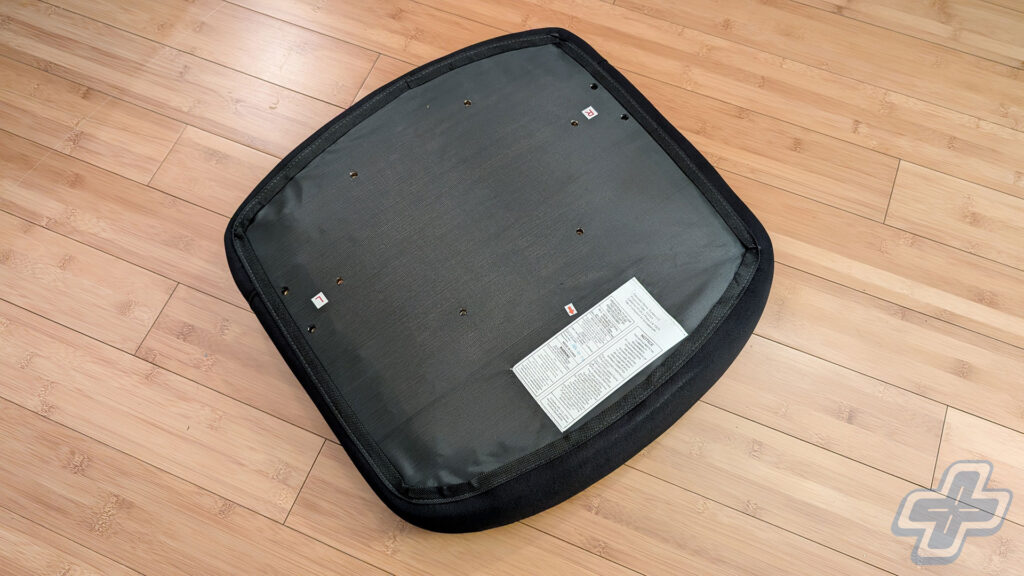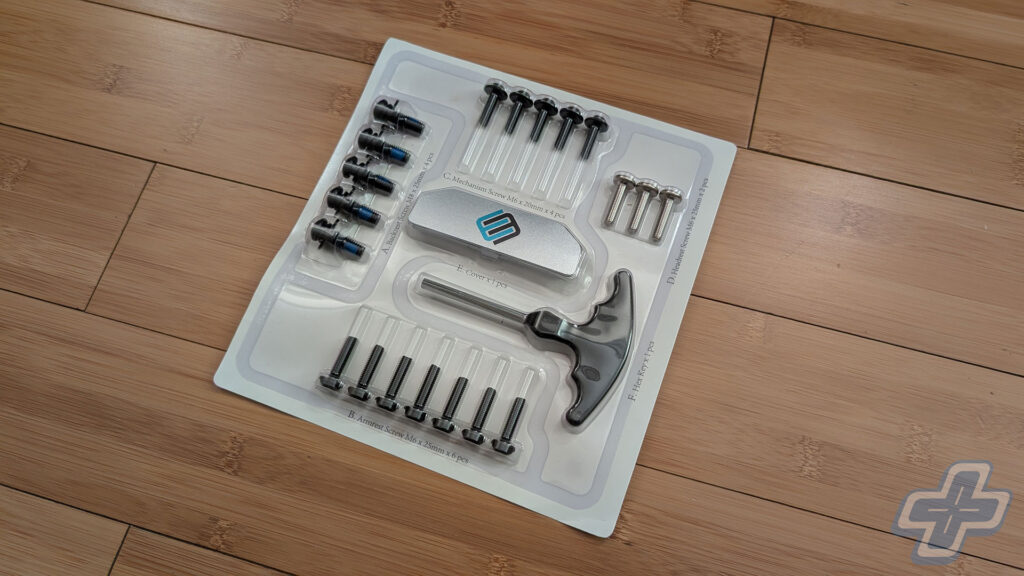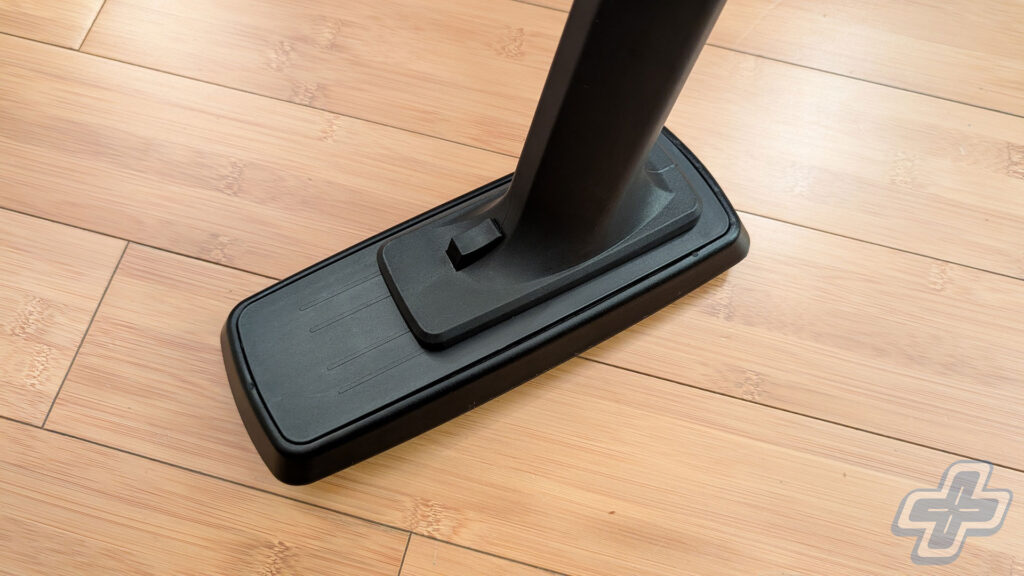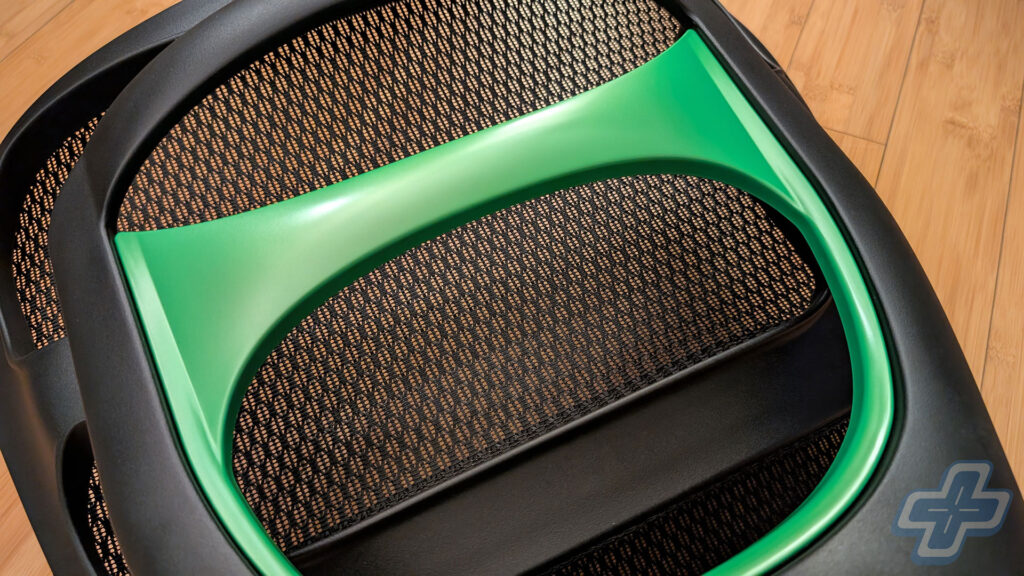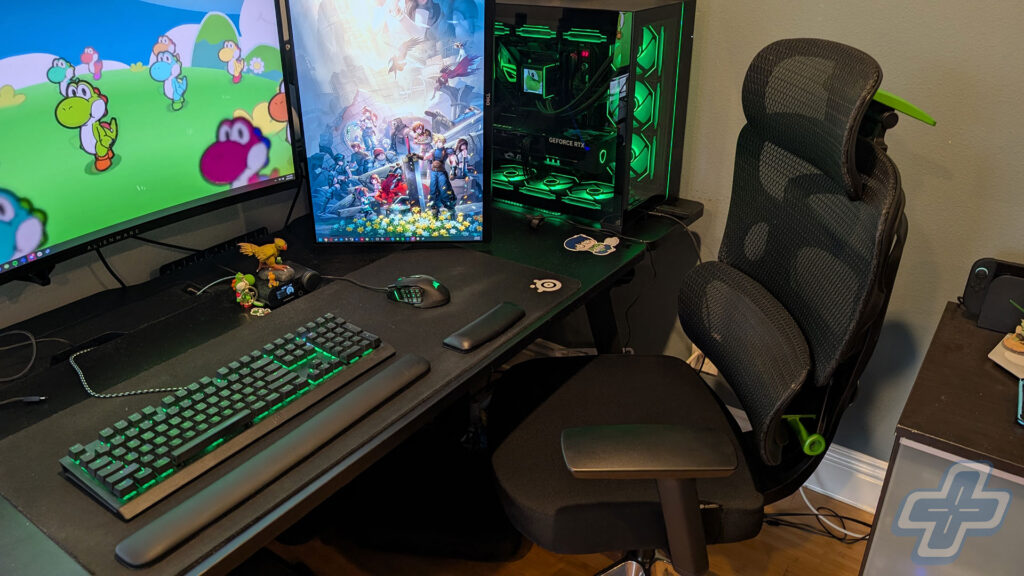Quick Verdict
If you’re shopping in the $400 price range for a proper computer chair, you’ve got dozens of mid-range options to choose from. Looking specifically at so-called gaming chairs, you’ll find that at this price point research steers you toward brands like Secretlab and Alienware. Take it from me: avoid those gaming chairs that look like car-racing seats and stick with something more traditional if you care about your back. Instead, consider the Axion from Eureka Ergonomic. After spending three weeks using the Axion daily, I found it is a strong contender in the $400 price range.
The Axion markets itself as a best-of-all-worlds chair, whether you want to use it for work, gaming, or even relaxing. There’s a surprising amount of adjustability for a $400 chair, and the mesh fabric gives it a high-end appearance. There are some quirks, though, depending on your height: I found it a bit hard to get everything in just the right spot for comfort.
Charged Reaction

Over the past 10-plus years, I’ve become a chair enthusiast of sorts. As I mentioned in my Anthros chair review, as I got older and back pain became more commonplace—especially after long seating sessions—I decided it was time to properly invest in a computer chair. Growing up, I never understood why anyone would spend in the range of $500 or more for a computer chair. It wasn’t until I started using a Steelcase Gesture each day that I noticed a difference. Before I got myself a Steelcase Gesture, though, I bought into the hype of Secretlab, which to this day is one of my biggest regrets. The marketing around “gaming chairs” has become full of misinformation, and more often than not they’re designed to look cool, but that’s about it. Now, I understand why companies are marketing gaming chairs, but you really should avoid all those that look like bucket racing seats. As a car enthusiast who has built multiple race and show cars, I can tell you, those seats weren’t designed for comfort or long sessions. If you’re gaming on a PC, you’re going to want to get a real desk chair.
The thing is, many popular office chairs carry eye-watering, four-digit price tags. This leaves shoppers looking at something like a Secretlab and thinking they’re getting a good bargain—it’s a fraction of the price of a Steelcase Gesture or Anthros and the internet is filled with positive reviews. Fortunately, in the past few years, several companies have begun manufacturing more affordable ergonomic chairs in the same price range. Some of these are clearly attempts at copying other more well-known products on the market, but if they’re available with a significantly cheaper price tag, who’s to complain?
One such product is the Axion from Eureka Ergonomic. The company reached out to me to see if I would be interested in evaluating the Axion, and after I saw its $399.99 price tag I agreed. I understand most people won’t spring for a Steelcase Gesture or Anthros, so I was genuinely curious to see how the Axion would compare to much more expensive and premium offerings. The answer was a bit of a surprise.
Discovery Mode

Although you typically only have to assemble a chair once, I do find it to be part of the ownership experience. It’s likely because I had such a terrible time assembling the Secretlab that ever since then I’ve placed extra emphasis on how easy or difficult it is to put together a specific chair. The Eureka Ergonomic Axion is fairly straightforward and can be done with a single person in about half an hour. I had one step that was a little frustrating—trying to attach the back of the chair to the seat—mainly due to the weight of everything. It would have been a lot easier if I had an extra pair of hands, but I wanted to see how difficult it was to assemble the Axion on my own.
While assembling the chair, I took some time to carefully take a look at its materials and overall construction. For the most part, they’re great quality, but there are some components that don’t feel premium or fully refined. For example, many of the adjustable features are notched, meaning things click as you move them, and getting them into the exact spot you want can be frustrating. Also, if you accidentally go past the setting you like when adjusting the headrest or lumbar support, you have to start all over again by taking it back to the first setting. I found myself accidentally moving the lumbar support while just sitting in the chair sometimes, and it didn’t take much force to push it back against the chair. It would be nice if there were more tension or a way to lock in your preferred settings.
Personally, I would have preferred if the base did not have a chrome-polished finish since it doesn’t match the rest of the chair’s aesthetics. An all-black or even matte silver option would be more fitting to the overall design. Perhaps it’s my past experience in the automotive industry, but this type of polished finish is the opposite of premium. Overall though, I would say Eureka Ergonomic is delivering great value here. If I didn’t already know the price tag, I never would have guessed the Axion’s normal price is $399.99—it looks and feels more expensive.
Mesh Marvel

It’s fair to say Herman Miller’s Aeron chair brought mesh-back seating into the mainstream. Over 30 years after the Aeron’s introduction to the market in 1994, it’s still one of the most popular office chairs worldwide. There are several benefits to mesh-back chairs, including breathability to keep your back cooler and adaptive support, since it can stretch slightly. Some even prefer the mesh-back appearance since it has become synonymous with the Aeron, giving the impression the chair costs a lot more than it actually does. It’s a safe bet the Axion from Eureka Ergonomic chose a mesh back for all of those benefits. Hopping from the Anthros to the Axion made me realize just how much cooler the mesh fabric is, especially in recent weeks when it’s been warmer. I spend at least eight hours a day sitting, and I have to say it’s been a while since I last used a mesh-back chair; I’d forgotten how much I missed it. The IKEA Markus was the last mesh-back chair I used, and that was well over five years ago.
Unlike the Aeron, however, the Axion has a full seat cushion composed of high-density molded foam and integrated springs. Eureka Ergonomic claims this combination provides even support and effective pressure distribution in order to ensure comfort and minimize fatigue during long use. I agree with the company’s claim, having found the cushion quite comfortable over the past few weeks. It’s noticeably better than the cushion on the much more expensive Steelcase Gesture but not quite on par with what Anthros offers. You might say comparing the $400 Axion to the $1,750 Anthros is unfair, but I did say the Axion’s cushion felt more comfortable than the Steelcase Gesture. If you want a more fair comparison in terms of pricing, the Axion’s cushion is leagues better than what Secretlab offers on any of its chairs, unless you really prefer something stiff.
One interesting design feature is the segmented backrest that separates the lumbar support from the rest of the back panel. That means you’re able to adjust the lumbar support independently, vertically and horizontally. This initially felt a bit awkward to me, especially since I had gotten used to the Anthros chair’s pelvic support, and it took me a bit of time to find the right settings to properly support my back. The most frustrating aspect of the lumbar support was how quickly it sank back against the chair under the slightest pressure. I would adjust it forward, since I’m only 5’5″, and it would just reset if I slightly leaned back on it. Adjusting the seat depth also felt clunky compared to how it’s done on the Steelcase Gesture. With the Axion, I had to get out of the chair to slide the seat pan fully forward, then sit back down and lift the rod to slide it backward into position. Although you can adjust seat depth while seated, I found it too awkward.
Hybrid Harmony

Another aspect I really focus on when evaluating a chair is the armrests. The chair’s 3D adjustable armrests allow you to slide them back and forth up to 1.57 inches, pivot 10 degrees inward or outward, and move up and down 2.76 inches. This level of adjustability is pretty impressive for a chair in this price range, but I found their spacing to be a bit on the wider side with no easy way to adjust them back closer to the chair. The Secretlab lets you slide the armrests inward or outward, and the Steelcase Gesture remains unrivaled in armrest adjustment. Overall they’re comfortable, with a nice level of firmness. I would say the Axion’s armrests are comparable to what’s found on the Anthros chair, which is impressive, considering it’s a fraction of the price.
Where the Axion really shines, though, is in its six-direction dual-axis headrest. Yes, I know there are plenty of discussions out there among ergonomic experts whether or not a headrest is ideal, but for those who prefer having one, the Axion’s headrest can be adjusted in a number of ways. You can slide it forward or backward, move it up and down, and swivel it to the exact angle you want. Again, the process of actually adjusting the headrest is a bit finicky, with notched settings and it sliding back if too much pressure is applied.
The combination of these adjustable features is great, but it depends on knowing how to use them correctly. As some of us know the hard way, the most comfortable seating position isn’t always the best for our backs. Although it can be comfortable in the moment, I’ve experienced intense pain when I stood up after a few hours of sitting. Obviously more adjustability is better, but I highly recommend learning how to properly set up the Axion rather than relying solely on what feels most comfortable.
Value Throne

While I haven’t tested dozens of chairs in this price range, I wouldn’t hesitate to recommend the Eureka Ergonomic Axion over any Secretlab or similar gaming chair. The Axion offers much more adjustability, but it takes time to dial it in just the way you want. There are some quirks with the overall package, but it’s a solid chair for the price. I hate calling it a good bang for the buck, but you get premium features without the premium price. While it may not replace my Anthros or Steelcase Gesture as my preferred computer chair, the Axion has become my go-to for leaning back and relaxing during console gaming on the TV. When reclining, the Axion is the most comfortable out of all my current chairs and it’s been a great partner while I put in hours with the new Switch 2.
If you’re looking for something stylish that still offers all the ergonomic benefits of a premium computer chair, the Axion is a great option. Unfortunately, only green and blue accents are available with the chair. It seems a major oversight that the Eureka Ergonomic doesn’t offer red, arguably the most common gaming color. Time will tell how well the cushion holds up over the years, but my initial impressions of its quality are positive. The Axion is recommended for users between 4’9″ and 6’1″ in height and has a maximum weight capacity of 300 pounds.
Eureka Ergonomic provides a two-year limited warranty on upholstery, backrests, seat cushions, and headrests, and a three-year limited warranty on all other parts. The Axion is available with a 30-day return policy.
This review is based on a chair provided by Eureka Ergonomic. However, Eureka Ergonomic did not preview or influence the content of this review prior to its publication. While FullCleared has affiliate partnerships, these do not influence our editorial content. We may, however, earn commissions for products purchased via affiliate links.







